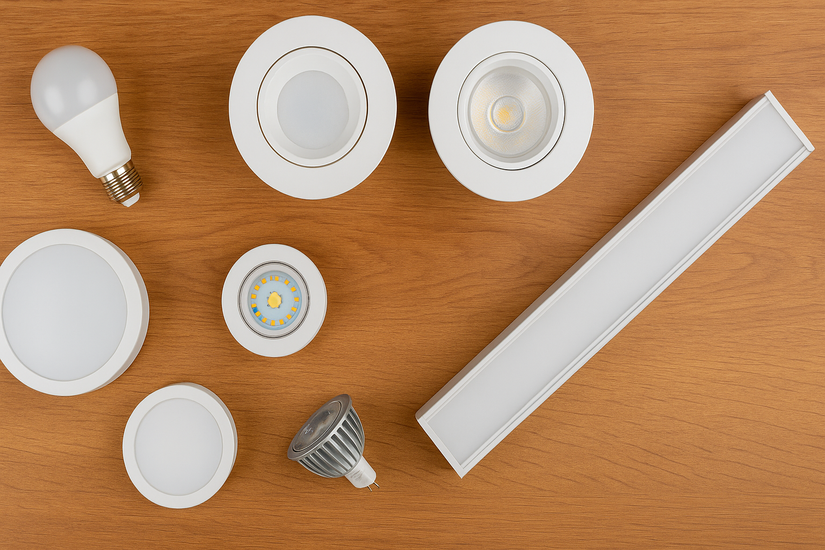How to Choose the Right LED Fixtures for Your Home or Business
Aug 20th 2025
LED lighting has become the go-to choice for homeowners and business owners looking for energy efficiency, durability, and superior illumination. With a vast array of options available, selecting the right LED fixtures can be overwhelming. Here’s a guide to help you make the best choice for your space.
1. Determine Your Lighting Needs
Before purchasing LED fixtures, assess the purpose of the lighting. Different spaces require different lighting solutions:
- Ambient Lighting: General illumination for overall brightness (e.g., ceiling-mounted fixtures, panel lights).
- Task Lighting: Focused lighting for specific tasks (e.g., under-cabinet lights, desk lamps).
- Accent Lighting: Decorative or highlighting purposes (e.g., track lights, spotlights).
Understanding the function of each space ensures you select fixtures that enhance both aesthetics and efficiency.
2. Consider Brightness and Color Temperature
LED lights come in various brightness levels (measured in lumens) and color temperatures (measured in Kelvin, K).
- Lumens: More lumens mean brighter light. A kitchen or office may require 3,000-5,000 lumens, while a bedroom may need only 1,500-3,000 lumens.
- Color Temperature:
- 2700K–3000K: Warm white, ideal for cozy spaces like bedrooms and living rooms.
- 3500K–4500K: Neutral white, suitable for offices and kitchens.
- 5000K–6500K: Cool white/daylight, great for task-oriented spaces like garages and warehouses.
3. Choose the Right Fixture Type
LED fixtures come in many forms, each suited to different applications:
- LED Bulbs: Replacements for traditional incandescent and CFL bulbs.
- Downlights/Recessed Lights: Sleek and modern for ceilings.
- Track Lighting: Adjustable heads for directional lighting.
- Panel Lights: Great for offices and commercial spaces.
- Wall Sconces and Decorative Fixtures: Add style and functionality.
- High Bay/Low Bay Lights: Best for industrial and warehouse applications.
4. Look for Energy Efficiency and Longevity
One of the main advantages of LED lighting is energy efficiency. When choosing fixtures, check for:
- Wattage: Lower wattage LEDs produce the same brightness as higher wattage incandescent bulbs.
- Lifespan: Many LED fixtures last 25,000–50,000 hours, reducing replacement costs.
- Energy Star or DLC Certification: These ensure efficiency and quality standards are met.
5. Check for Dimming and Smart Features
Modern LED fixtures come with dimming capabilities and smart features:
- Dimmable LEDs: Allow brightness adjustment for ambiance and energy savings.
- Smart LEDs: Can be controlled via apps, voice commands, or automation systems, perfect for both homes and businesses.
6. Consider Installation and Compatibility
Before purchasing LED fixtures, confirm:
- Fixture Compatibility: Ensure the LED fixture matches your existing sockets or wiring.
- Ease of Installation: Some fixtures require professional installation, while others are plug-and-play.
- Outdoor vs. Indoor Use: If using outdoors, ensure fixtures are rated for weather resistance (IP65 or higher for wet locations).
7. Balance Quality and Cost
While budget matters, investing in high-quality LED fixtures ensures long-term savings. Cheaper LEDs may have poor heat dissipation, lower lifespan, and inconsistent brightness. Consider reputable brands and warranties to get the best value for your investment.
Final Thoughts
Selecting the right LED fixtures for your home or business involves understanding your lighting needs, considering brightness and color temperature, choosing the right fixture type, and ensuring energy efficiency. By making an informed decision, you can enhance both aesthetics and functionality while saving on energy costs.
Need help choosing the perfect LED lighting solution? Contact us for expert recommendations tailored to your space!

